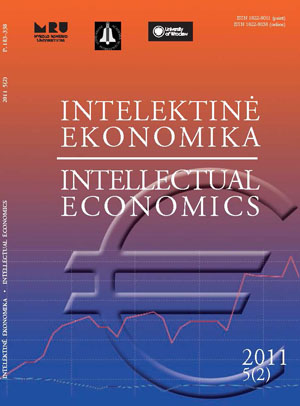Mining Social Science Data: a Study of Voting of the Members of the Seimas of Lithuania by Using Multidimensional Scaling and Homegeneity Analysis
Mining Social Science Data: a Study of Voting of the Members of the Seimas of Lithuania by Using Multidimensional Scaling and Homegeneity Analysis
Author(s): Tomas Krilavičius, Vaidas MorkevičiusSubject(s): Economy
Published by: Mykolas Romeris University
Keywords: Multidimensional scaling; Homogeneity analysis; Data mining; Data visualization; Similarity measures; Roll-call analysis; Parliamentary voting
Summary/Abstract: Multidimensional scaling (MDS) is a well known statistical and data mining technique. It is applicable for an exploratory data analysis and visualization in many different areas, such as economics, especially marketing, credit risk analysis, psychology and computer science. However, it suffers from some serious drawbacks, i.e. it depends on several subjective parameters: choice of data coding, similarity measures and modeling type. We demonstrate these drawbacks in a novel application of MDS analyzing a roll-call voting of the members of Lithuanian Parliament (MPs). We propose using a different technique allowing to escape from the mentioned problems in social science data mining, a homogeneity analysis. We briefly discuss it, illustrate its application on the same data and demonstrate its advantages over MDS. In the paper we concentrate on the technical and methodological aspects of the both methods, therefore, it can be easily reapplied to analyze various economic data, such as customers churn in telecommunications or customers groups in marketing. We discuss all the used tools, coding of votes, similarity measures, division (or non-division) of roll calls into the substantive periods, dimensionality of the solutions of MDS and homogeneity analysis as well as diverse visualization techniques. We compare different visualization techniques of the results of homogeneity analysis where most of the objects in the produced plots represent MPs: 2D and 3D object plots; span plots, where for each class of objects (in our case a faction) a minimal spanning tree is drawn; 2D and 3D star plots, where each object is connected with its class centroid. We conclude with recommendations for researchers modeling social science data and present our future plans regarding voting analysis.
Journal: Intelektinė ekonomika
- Issue Year: 5/2011
- Issue No: 2
- Page Range: 224-243
- Page Count: 20
- Language: English

